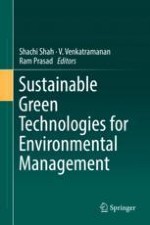2019 | OriginalPaper | Chapter
7. Rain Gardens as Stormwater Management Tool
Authors : Piyush Malaviya, Rozi Sharma, Pradeep Kumar Sharma
Published in: Sustainable Green Technologies for Environmental Management
Publisher: Springer Singapore
Activate our intelligent search to find suitable subject content or patents.
Select sections of text to find matching patents with Artificial Intelligence. powered by
Select sections of text to find additional relevant content using AI-assisted search. powered by
